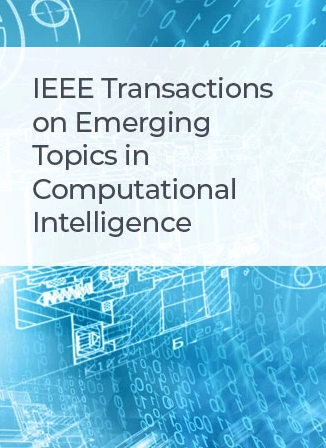基于多元种群迁移的动态社区检测多目标进化算法
IF 5.3
3区 计算机科学
Q1 COMPUTER SCIENCE, ARTIFICIAL INTELLIGENCE
IEEE Transactions on Emerging Topics in Computational Intelligence
Pub Date : 2024-09-05
DOI:10.1109/TETCI.2024.3451566
引用次数: 0
摘要
动态群落检测由于能够揭示群落结构随时间的变化而受到越来越多的关注。虽然进化聚类方法已被证明在解决这个问题上是有效的,但它们往往倾向于支持所谓的精英解决方案,无意中忽略了非精英替代方案的潜在价值。精英解决方案虽然可以保证人口收敛,但当网络发生变化时,由于缺乏多样性,可能导致人口负迁移。相反,当网络发生变化时,非精英解能够更好地适应变化的网络,从而帮助算法在新环境中找到准确的社区结构。为此,我们提出了一种多元化的人口迁移策略,该策略包括两个阶段,即解决方案选择和解决方案迁移。在第一阶段,我们不仅使用精英解决方案来保证收敛,还使用非精英解决方案来保持多样性和应对网络变化。在第二阶段,通过在两个连续的网络快照之间使用增量更改来改进迁移解决方案。在此基础上,提出了一种基于多元种群迁移的多目标进化算法DPMOEA。在DPMOEA中,我们设计了新的遗传算子,利用网络之间的增量变化使种群朝着正确的方向进化。实验结果表明,该方法优于目前最先进的基线算法,可以有效地解决动态社区检测问题。本文章由计算机程序翻译,如有差异,请以英文原文为准。
A Diversified Population Migration-Based Multiobjective Evolutionary Algorithm for Dynamic Community Detection
Dynamic community detection, which is capable of revealing changes in community structure over time, has garnered increasing attention in research. While evolutionary clustering methods have proven to be effective in tackling this issue, they often have a tendency to favor what are referred to as elite solutions, inadvertently neglecting the potential value of non-elite alternatives. Although elite solutions can ensure population convergence, they may result in negative population migration due to the lack of diversity when the network changes. In contrast, when the network undergoes changes, non-elite solutions could better adapt to the changed network, thereby can help the algorithm find accurate community structures in the new environment. To this end, we propose a diversified population migration strategy that consists of two-stages, i.e., solution selection and solution migration. In the first stage, we use elite solutions not only to ensure convergence but also non-elite solutions to maintain diversity and cope with network changes. In the second stage, the migration solutions are refined by using incremental changes between the two consecutive snapshots of networks. Based on the proposed strategy, we suggest a diversified population migration-based multiobjective evolutionary algorithm named DPMOEA. In DPMOEA, we design new genetic operators that utilize incremental changes between networks to make the population evolve in the right direction. Our experimental results demonstrate that the proposed method outperforms state-of-the-art baseline algorithms and can effectively solve the dynamic community detection problem.
求助全文
通过发布文献求助,成功后即可免费获取论文全文。
去求助
来源期刊

IEEE Transactions on Emerging Topics in Computational Intelligence
Mathematics-Control and Optimization
CiteScore
10.30
自引率
7.50%
发文量
147
期刊介绍:
The IEEE Transactions on Emerging Topics in Computational Intelligence (TETCI) publishes original articles on emerging aspects of computational intelligence, including theory, applications, and surveys.
TETCI is an electronics only publication. TETCI publishes six issues per year.
Authors are encouraged to submit manuscripts in any emerging topic in computational intelligence, especially nature-inspired computing topics not covered by other IEEE Computational Intelligence Society journals. A few such illustrative examples are glial cell networks, computational neuroscience, Brain Computer Interface, ambient intelligence, non-fuzzy computing with words, artificial life, cultural learning, artificial endocrine networks, social reasoning, artificial hormone networks, computational intelligence for the IoT and Smart-X technologies.
 求助内容:
求助内容: 应助结果提醒方式:
应助结果提醒方式:


